Gestione del paziente sottoposto a chirurgia combinata toracica ed
advertisement
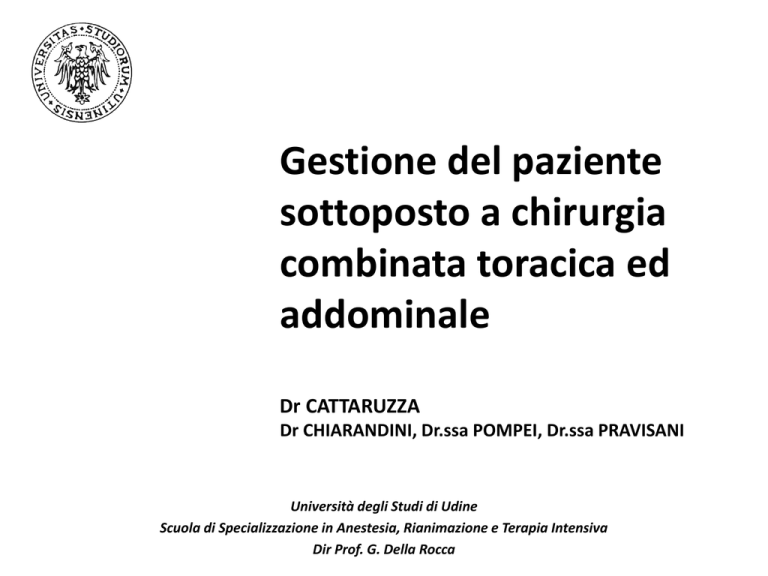
Gestione del paziente sottoposto a chirurgia combinata toracica ed addominale Dr CATTARUZZA Dr CHIARANDINI, Dr.ssa POMPEI, Dr.ssa PRAVISANI Università degli Studi di Udine Scuola di Specializzazione in Anestesia, Rianimazione e Terapia Intensiva Dir Prof. G. Della Rocca CASO CLINICO CASO CLINICO 22/11 • ECG: FA risp. Ventricolare lenta aspecifica asintomatica (TAO) • ECOcardio: FE 60% PAPs 35 mmHg, Dilatazione Biatriale severa • RX T: calcificazioni lobo superiore Sn • RM: multiple lesioni focali solide al VII (57 mm) e IV (26mm) seg. Epatico • PFR: Deficit ostruttivo severo FEV1 58% MEF25-75 17% DLCO non alterato • EGA pH 7.42 pCO2 42 mmHg pO2 86 mmHg P/F 410 mmHg HCO3 27 mmol/l BE 2.9 mmol/l Hb 13.6 gr/dL CASO CLINICO 3/12 • Metastasectomia IV – VII segmento epatico • Secondarismi da GIST 8/12 • Discomfort respiratorio post operatorio velatura pleurica Dx (RX) indici flogosi, febbricola • Vis. Pneumologica: Dispnea Multifattoriale 10/12 (versamento/anemizzazione) Claritromicina 1 cp/die per due giorni 12/12 • DIMISSIONE CASO CLINICO 16/12 17/12 • UO Medicina Generale GORIZIA • DISPNEA+VERSAMENTO PLEURICO ndd • PIPERACILLINA/TAZOBACTAM MEROPENEM ( indici flogosi) 20/12 • DISPNEA SCADIMENTO CONDIZIONI GENERALI • DRENAGGIO TORACICO DX 23/12 • TC t-a: EMPIEMA PLEURICO BASE DX+ ASCESSO SUBFRENICO • (VII segmento 6.5 cm) 26/12 • CLINICA CHIRUGIA GENERALE UDINE CASO CLINICO CONS. CARDIOLOGICA: Fibrillazione atriale Digossina + Ramipril + Bisoprololo INSUFFICIENZA RESPIRATORIA DETERIORAMENTO NEUROLOGICO pH 7.30 pCO2 74 mmHg pO2 79 mmHg P/F 197 mmHg HCO3 36 mmol/l Lac 1.3 mmol/l BE 14.3 mmol/l CASO CLINICO 26/12 28/12 29/12 31/12 • NIV -> IOT pH 7.25 pCO2 96 mmHg pO2 90 mmHg P/F 186 mmHg HCO3 35 mmol/l BE 14 mmol/l • RADIOLOGIA INTERVENTISTICA Posizionamento drenaggio ascesso epatico • AUTOESTUBAZIONE + RIMOZIONE ACCIDENTALE DRENAGGIO EPATICO • TRASFERIMENTO CLINICA CHIRURGICA Hb 12,3gr/dL CASO CLINICO 31/12 • TAC TORACO ADDOME Versamento pleurico dx 6.5cm, raccolta trancia resezione VII seg. Epatico 7x6cm 3/01 • RADIOLOGIA INTERVENTISTICA Nuovo drenaggio raccolta epatica 6/01 • CONS. PNEUMOLOGICA Drenaggio posteriore emitorace dx in aspirazione + Lavaggi cavo pleurico con Urokinasi 10/01 • RX TORACE Persiste velatura terzo medio inferiore CP dx • TAC TORACO ADDOME 14/01 Lieve riduzione falda versamento pleurico dx, invariato quadro epatico CASO CLINICO 15/01 16/01 EGA • CONSULENZA PNEUMOLOGICA Camere di aspirazione non rifornite Trattamento chirurgico Revisione cavo pleurico dx +/- decorticazione • CONSULENZA ANESTESIOLOGICA METS<4 ASA III-IV pH 7.47 pCO2 59 mmHg pO2 99 mmHg P/F 353 mmHg HCO3 40 mmol/l Lac 0.8 mmol/l FiO2 0.28 17/01 • TRASFERIMENTO BLOCCO OPERATORIO CHIRURGIA TORACICA BE 18 mmol/l TOILETTE CAVO PLEURICO + DECORTICAZIONE PARZIALE IN TORACOTOMIA POSTERO LATERALE S N D X 1 2 3 4 • DLT: tube exchange with ETT through AEC under directed laryngoscopic view • DLT cuff deflated withdrawn EXTUBATIONto the 19-20 cm mark EDEMA AIRWAY • ETT/BB: Remove BBMUCOSA BLEEDING SECRETIONS • Extubation with AEC “..at the end of surgery, airways cannot be considered the same as before surgery and intubation. “ MINERVA ANESTESIOL 2009;75:59-96 10 years REVIEW IHT and Related Adverse Effects (AE) 1-Equipment Related Risk Factors (RF) 2-RF related to the transport team (Experience) 3-RF relating to transport indication and organisation 4-Patient related RF Good clinical sense/risk benefit analysis for IHT AE incidence remains high Inexperienced team/unstable patient is a risky combination Fanara et al. Critical Care 2010, 14:R87 LAPAROTOMIA ESPLORATIVA TRANCE RESEZIONE EPATICA/TOILETTE LOCALE TERAPIA INTENSIVA 2.5 2.5 2.5 2.5 2.5 CONSULENZA CARDIOLOGICA FA PERMANENTE SINDROME BRADICARDIA-TACHICARDIA IPERTENSIONE ARTERIOSA TEOFILLINA * PREVEDERE IMPIANTO STIMOLAZIONE ENDOCARDICA PROVVISORIO/DEFINITIVO 2.5 AGENDA TEA risk and benefits TEA awake or asleep? TEA solutions administered TEA outcome Anesthesiology 2011; 115:181–8 Anesthesiology Research and Practice Volume 2012, Article ID 309219 Anesthesiology Research and Practice Volume 2012, Article ID 309219 Aromaa - Acta An Scand 1997: Auroy - Anesthesiology 1997: • 170,000 estimated epidurals • “Severe complications” incidence: 0.52/10,000 • (9 complications) • 30,413 epidurals • 6 neurologic events 2/10,000 • paraesthesia or pain in all cases of damage Auroy - Anesthesiology 2002 : Moen - Anesthesiology 2004: • 5,561 non-obstetric epidurals • 2 “Seriuous complications” (1 seizure, 1 meningitis) • 450,000 estimated epidurals • “Severe neurological complications”: 1:3,600 non-obst epidurals Horlocker Epidurals under AG 4,298 lumbar epidurals No neurologic complications Confidence interval 95%: serious neurologic complications up to 0.08% Anesth Analg 2003;96:1547–52 97,925 PERIOPERATIVE epidurals Permanent injury in adult periop epidural: pessimistic: 17.4/100,000 optimistic: 8.2/100,000 Paraplegia + death in adult periop epidural: pessimistic: 6.1/100,000 optimistic: 1.0/100,000 British Journal of Anesthesia 102(2);179-90 (2009) Awake patient Deep breathing expand the potential cavity of the epidural space Better setting for catheterization Positive pressure ventilation ↓epidural space Difficult epidural catheter insertion Complication is rare, yet catastrophic Is inevitable that needles or catheters will inadvertently violate the cord, but in some cases injury might be minimized by a responsive patient There is still substantial controversy many anesthesia providers believe that epidural catheters should be placed in awake or mildly sedated patients capable of providing feedback THORACIC EPIDURAL PLACEMENT should never be attempted on an anesthetized patient NAUSE/VOMITING PRURITUS SEDATION RESPIRATORY DEPRESSION HYPOTENSION PRURITUS HYPOTENSION MOTOR BLOCKADE NAUSEA/VOMITING MOTOR BLOCKADE SEDATION RESPIRATORY DEPRESSION Anesthesiology, V 115 • No 1 80 Patients VAS at Rest VAS Dynamic Anesthesiology 2011; 115:181–8 52 Patients Ropivacaine 0.2% vs Levobupivacaine 0.125% +/- Sufentanil 1mcg/mL VAS rest and coughing, side effects and rescue PCA (within 48h) 1. 2. 3. Similar static and dynamic analgesia NO motor block – No major side effects Similar incidende of minor side effects European Journal of Anaesthesiology 2008; 25: 1020–1025 28 Patients Undergoing Abdominal Aortic Surgery Elastomero (10mL/h)Ropivacaine 0.2%/Fentanyl 4mcg/mL VS Levobupivacaine 0.125% /Fentanyl 4mcg/mL Minimal differences in CardioRespiratory Parameters Similar Antalgic Effect Higher Anesthetic effect of Levobupivacain (Lower dosage) Minerva Anestesiologica 2003;69:751-64 109 Patients Undergoing Major Abdominal Surgery (TEA T9-T11) 4 Groups (R, R+S0.5, R+S0.75, R+S1) R0.2%+SO.75mcg/mL appropriate analgesia/side effects Anesth Analg 2000;90:649 –57 Anesthesiology 2002; 96:536 – 41 ….. Randomized controlled trials: Epidural vs Systemic Analgesia (1971-2011) Different type of Surgery 4525 epidurals Mortality, morbidity and epidural related adverse effects Annals of Surgery Volume 00, Number 00, 2013 ….. Annals of Surgery Volume 00, Number 00, 2013 Annals of Surgery Volume 00, Number 00, 2013 Reduced risk of postoperative mortality Adverse Effects: Hypotension Prutitus Motor Blockade Beneficial effect : Cardiovascular pulmonary and GI function Neurologic Complications: Ematoma Infections Trauma Annals of Surgery Volume 00, Number 00, 2013 CASO CLINICO 25/01 28/01 • Progressivo peggioramento scambi respiratori • Non risposta a CICLI di NIV -> IOT • Confezionamento TRASCHEOSTOMIA -> Weaning respiratorio (T-tube) • Rimozione drenaggi Toracici 10/02 • IPERTENSIONE in Terapia Farmacologica • FIBRILLAZIONE ATRIALE (HR 100bpm) 12/02 • Condizioni cliniche stabili (Tracheo in RS,FiO2 0.28 P/F>300, Fac-HTN) • Terapia: Enoxaparina – Spironolattone – Ramipril - Teofillina 13/02 • TRASFERIMENTO presso Terapia Intesiva di Monfalcone
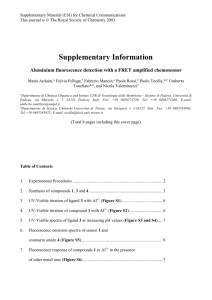
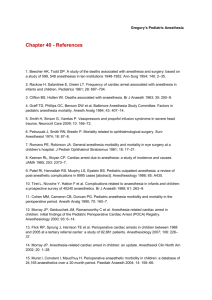
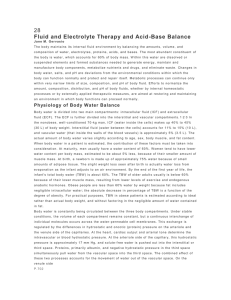
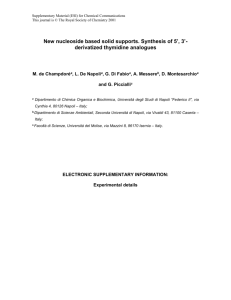
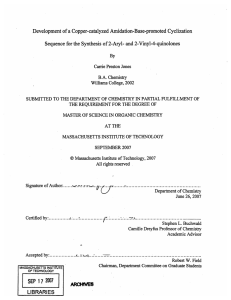
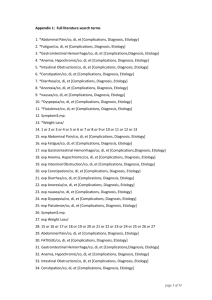
![[A] t - Dr. Agus Setiabudi, M.Si.](http://s2.studylib.net/store/data/005634279_1-eed3e2d8492eb37cb8d8ed06da0883dc-300x300.png)